All of us like to look at a lovely garden but we can make it more exciting and appealing to others when the senses are stimulated as we wander around it. You can easily make certain areas for each sense or else make a sensory trail along a garden path or around the whole garden. I wrote the following primarily for a group of people with restricted sight but all the ideas can be used very successfully in anyone’s garden.
The Sense of Sight
People with restricted sight can focus on growing strong vibrant colours in shades of red, orange, yellows and deep pink. Azaleas are very strongly coloured along with many bulbs and other herbaceous plants. The bright colours won’t attract more wildlife into the garden as they see only see UV colours in the flowers, but birds have similar eyesight to humans so the coloured berries will certainly attract them into the garden.
It’s certainly a lot easier to introduce colour into the garden during the spring and summer months. Check out my posts on what’s in bloom every month of the year. There are the bright coloured daffodils and tulips at the start of the year, roses, geraniums and lavender in the early summer with asters and rudbeckia’s in the late summer.
Even in the late autumn and winter when there is little flowering in the garden you can still incorporate these colours in the leaves, bark, stems and berries. Some good examples are heucheras as their leaves can range from purple with splashes of silver, pink, lime green to coppery and cinnamon colours. Then there’s the cinnamon coloured peeling bark from Acer griseum, the winter red stems from the Cornus siberica and the magenta berries of the Callicarpa.
Hard Landscaping
Then we have the hard landscape materials such as cobble stones, pebbles, pea gravel, grit and slate that we can use as a mulch around the plants to keep the weeds under control. Plus it gives a lovely finishing touch to the garden especially when you use different sizes of pebbles in different areas.
Movement
Movement is also important for stimulating sight. There is the natural movement in trees and ornamental grasses such as Miscanthus, Stipa and Calamagrostis. To have the greatest effect for the sense of sight make sure you place these plants in areas where they will catch some of the breeze.
The garden wildlife will also create movement. There are the bees, hoverflies, butterflies, birds, lacewings, dragonflies during the day while the bats and moths will visit in the late evening. You can encourage more wildlife into the garden by growing nectar rich plants and wildflowers.
Finally garden ornaments such as mobiles can also provide movement and some will catch the sunlight too.
The Sense of Touch
Our gardens are full of different textures that we can touch and feel and glide our fingers over.
We have rough surfaces such as walls, bark and lichen. Smooth surfaces like leaves and pebbles and soft surfaces like moss.
And then there are the surfaces that are hot to touch when the sun shines on them and the cool surfaces in the shade. It’s the same with water in the garden …hot and cold depending on where you situate your water feature.
Then there is the stickiness of the soil when wet, the lovely crumbs of garden compost and the crispiness of old fallen leaves.
Then there are the plants can have textured, prickly, spiky and hairy leaves.
There’s the softness of the conifers and hebes and how tactile the ornamental grasses are as you run your hands through them.
Some of the best examples of texture in plants are:
- Miscanthus
- Artemisia
- Ornamental Cabbage
- Stipa
- Carex
- Buxus
- Phormium
- Sea Holly
- Corkscrew Hazel
- Fennel
- Housel
- Dianthus
- Stachys
- Santolina
- Iris
Finally if you want to add an ornament or two into the garden then a garden sphere is quite fitting for the sense of touch with its smooth round surface.
The Sense of Sound
Close your eyes and imagine listening to the sound of the wind rustling through the trees and stems and the rattle of seed heads. The buzzing of bees, the odd grasshopper, birds singing, water running, dripping or splashing over cobbles, wind chimes and more than likely there will be the sound of a lawnmower somewhere in the distance too!
Do you want to create some subtle moods in the garden? There’s the whisper of weeping plants such as willow and birch that can calm the senses. Then there’s the rustling of ornamental grasses such as Pampas grass and bamboo and the sudden burst of a seed pod if you listen closely.
The best plants for the sense of sound in the garden are:
- Bamboo
- Stipa
- Birch
- Pine
- Lunaria
- Physalis
- Platycodon
- Oenothera – this plant is excellent at making a sound when its buds pop open.
Other sounds such as running water, the crunch along a gravel path and wind chimes all make excellent audio signals especially for those gardeners with restricted vision as it helps them navigate themselves in the garden.
The Sense of Taste
- Beans: ready to pick when feel large enough
- Golden Squash: brightly coloured at harvest time
- Lettuce: ready to pick when leaves feel large enough – pick and come again varieties are excellent choices
- Red Leafed Lettuce: brightly coloured
- Various varieties of mint: pick the leaves
- Nasturtiums: peppery taste to leaves and flowers – great to make salads look colourful
- Peppers: all brightly coloured
- Spinach: once it feels large enough
- Strawberries: turn red when ripe and ready to pick when softened slightly
- Tomatoes: turn red when ripe and ready to pick when softened slightly
- Chives: just pick the non flowering stems
- Rhubarb: stems are ready to pick……… (that means pull the stems rather than cut them) when red – the thinner stalks are less stringy and less acidic – best picked till the end of July as the stems get too acidic from August onwards.
The Sense of Smell
…aromatherapy in the garden
Fragrant flowers are nectar rich and so essential to have in our gardens to attract the wildlife. Some of our most fragrant flowers are:
- Monarda
- Lily of the Valley
- Dianthus
- Stock
- Peony Roses
- Philadelpus
- some of the honeysuckles
- and especially for winter flowering – Sarcococoa and Witchhazel.
Indoors
During the winter months everything is dormant in the garden but we can use houseplants indoors to give us a lovely fragrance in the home during these dark dreek days. Its very pleasurable to every now and again pop back to your favourite plant and nestle your nose into those blooms.
The best plants for scent indoors are:
- Citrus
- Jasmine
- Gardenia
- Hyacinths
- Stephanotis
If you have an open and exposed garden you won’t be able to appreciate far away scents. If you have a closed-in garden with a fence, hedge or a brick wall – the boundary will guard against the wind. The scent will be contained more in the garden and it will be easier to smell the fragrance.
Some plants you can smell the perfume quite a distance away like Roses and Honeysuckle. While there are others that you’ll need to get right up close to appreciate their scent i.e. Mahonia or daffodils.
Some plants only release their scent at particular times of the day like in the evening due to temperature change or later in the morning once the frost has melted from their petals. Those that release their scent in the evenings are best situated in a westerly position in the garden – ideally near a seat or bench so that in the evening time you can appreciate their scent as you sit leisurely in the garden. I might add that many that release their scent in the evenings have not got eye catching flowers. They are normally quite dull looking and not at all showy but what they lack in looks they make up for in their aroma.
Evening Scented Plants
One of the best evening scented flowers is the Night Scented Stock – sow some seeds periodically in the same area and you will have a continuous scent over the summer months. I also grow some Virginia stock amongst it. It has a similar growth habit to the night scented stock but with small pink flowers that open during the day unlike the night scented stock whose flowers only open in the evening.
Other good plants for scent in the evening are:
- Phlox
- Honeysuckle
- Nicotiana
- Evening primrose.
The plants that release their fragrance in the evening are pollinated by moths rather than bees. So here’s an idea – go into the evening at dusk sit near those night scented plants – hopefully you will have a little group of them in a little sheltered area. Bring a torch with you and watch the moths come and go – and you never know…. you might get a little surprise and catch a bat swooping down to feast on some of those moths.
Did you know that bats are attracted to strong musty scents while bees seek out light floral scents while birds don’t really have any sense of smell at all. Cats have an incredible sense of smell – they certainly find the roots of my Actinidia Kolomikta very interesting – I’ve never even noticed a smell of the roots but it seems to attract the local cats. Many a cat leaves my back garden in a high after rolling about in my catmint as the fragrance and the oils seemingly produces a semi hallucinogenic effect in them.
One scent in the garden that I don’t find very attractive is that of the Rowan tree flower. The flowers are pollinated by flies – so to attract the flies the flowers smell of rotting meat!
Scented Leaves
Then we have the scented leaves and the fragrance released due to crushing or brushing against them. The best examples of these come from the herb family such as:
- Thyme
- Rosemary
- Mint
- Lemon Balm
- Scented Geranium
- Helichrysum
- Lavender
- and my favourite since a child … Artemisia known Old Man’s SouthernWood
Our feet are great asset to have around the garden. We can plant up the crevices of our paths with different types of thyme and corsican mint. Then every time we walk across the path our feet will release those invigorating pungent aromas.
You could even create a herb or chamomile lawn or even a chamomile or thyme seat. Lawn chamomile is very fussy and I’ve not been that successful growing chamomile in my garden. My soil is just too wet and heavy.
If you do grow a chamomile seat just watch out for the bees before you sit on it!
…and we’re not forgetting those non plant odours in the garden.
We have the lovely smell of food cooking on the barbeque, the burning logs in the chimenea (make sure the laundry is off the washing line or you will be reminded of it for days to come!). The citronella candles keeping away all those mozzies, freshly cut grass, freshly chopped wood and newly laid bark mulch.
A few years ago I laid about 8 bags of pine bark down in the garden and the scent of the bark was so strong that it attracted a huge, noisy wood wasp into the garden. Never in my life had I seen one of these. At first I was quite scared. I saw what I thought was the sting at the end of its body and it was huge and didn’t want to confront that noisy wasp. It was so obvious that it seemed to be intoxicated by the smell of the bark.
I was certainly intrigued by the noise of its wings but hoping that it would not fly too near me!. It turns out that the wood wasp is quite harmless and what I thought was its sting is really the part of its body where it lays its eggs – the ovipositor! Seemingly the wood wasp lays its eggs in pine bark so the scent from my mulch attracted it into the garden from the woods. I’ve only seen one twice now in the 12 years that the garden has been maturing.
Low Calorie Option
In the summer time there’s even one that smells of chocolate – and it really does! Many a time I have my nose in this one as I love it so much and it’s called Chocolate Cosmos.
Allergies
There is a growing population nowadays of gardeners and some members of their families that are allergic to strongly scented flowers in the garden. Some have asthma and hay fever and the strong scent can trigger an asthma attack or irritate peoples eyes and nasal passages. It’s best for gardeners who suffer from these allergies to create a low allergy garden with plants that contain low pollen levels. The best plants are normally female ones as they don’t contain any pollen.
Memories
One thing that scent can do for someone is evoke past memories. Have you ever thought what flower scents evoke strong memories for you? One former work colleague of mine loves the smell of sweet pea’s as it reminds her as a child smelling the flowers that her father used to grow. Mine is the smell of old fashioned roses as my granddad had a lovely rose garden in his front garden. You will also find that it’s not the new hybrid varieties of plants with the strong scents but the old fashioned types. One of my favourite old fashioned plants is Reseda odorata | Mignonette and you’ll probably only find these in a seed catalogue these days.
So if you want to have an aromatherapy session ………….. get out there and follow your nose!
A sensory garden for children
I hope I’ve inspired you to get out into your garden or community and create a garden that will raise your senses and have great fun creating it.



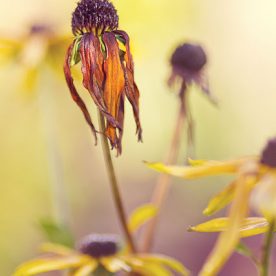
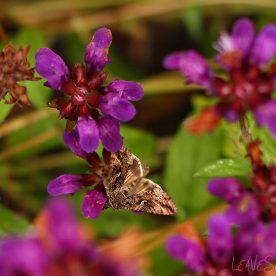
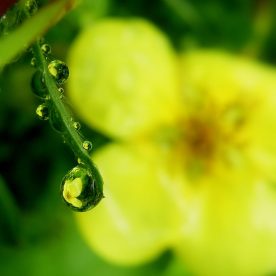
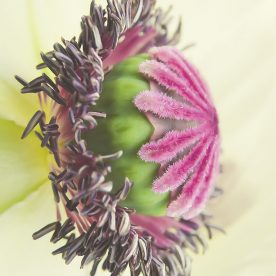
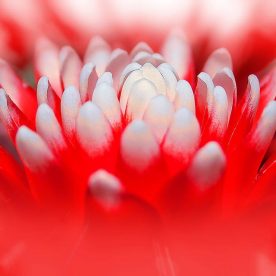
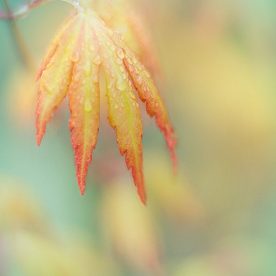
Ian
Love this article. I too work my way around my garden using my nose. We have chosen lots of different roses, lavender, stocks, jasmine, chocolate cosmos too. We've a young rowan tree too for its berries and hopefully waxwings. I never realised that its flowers were so malodorous, I will take a tentative sniff next year!